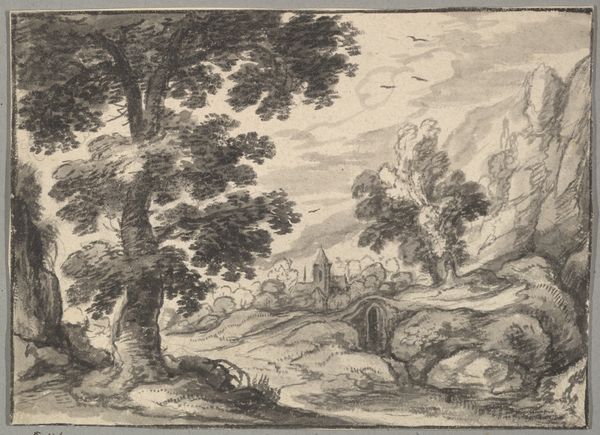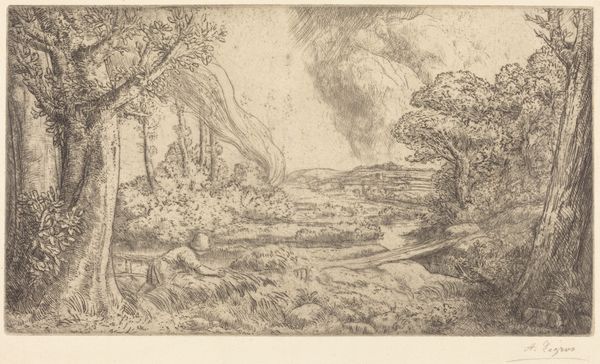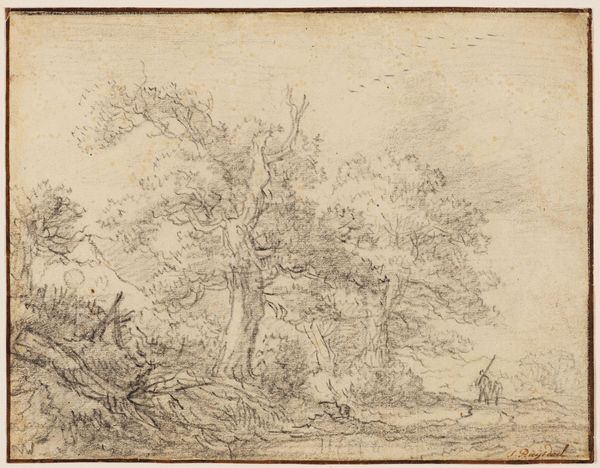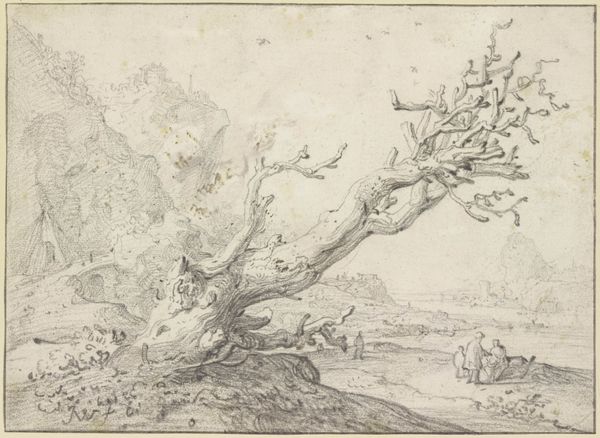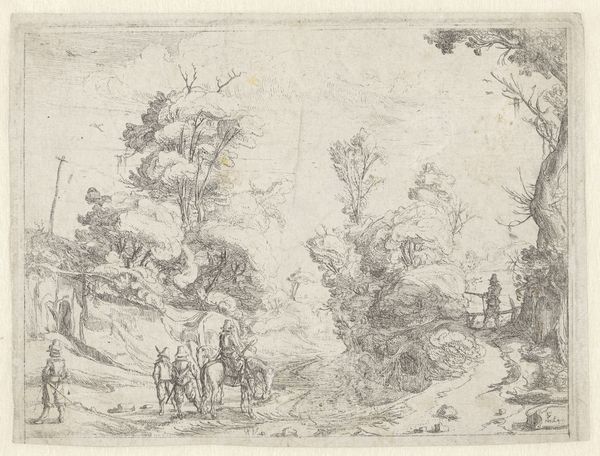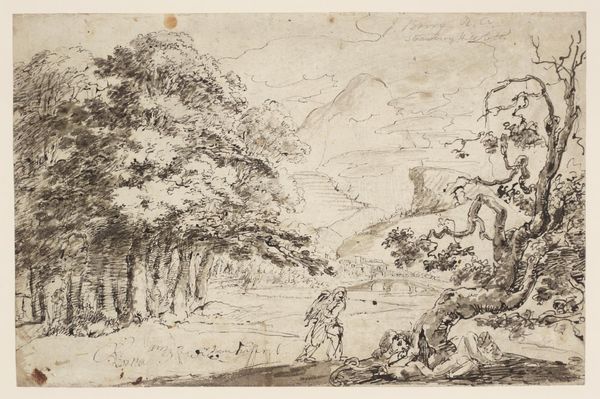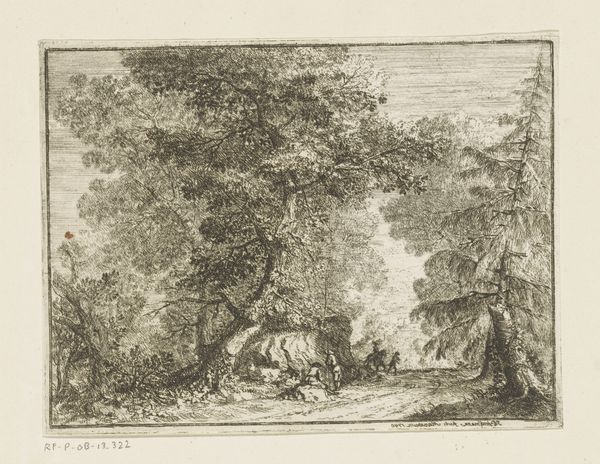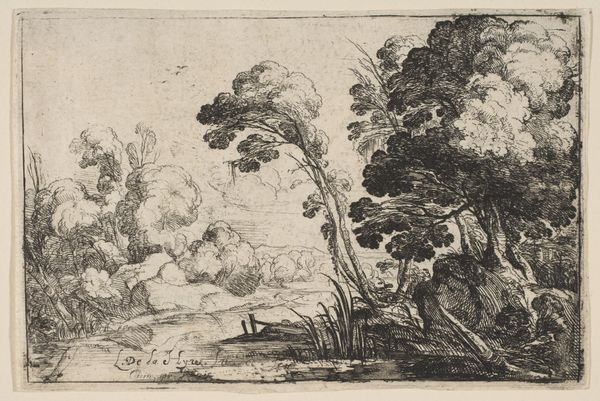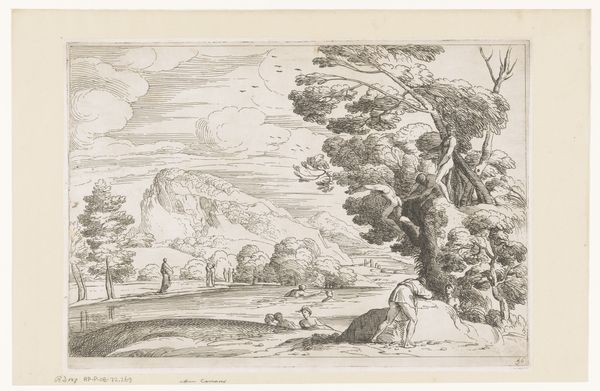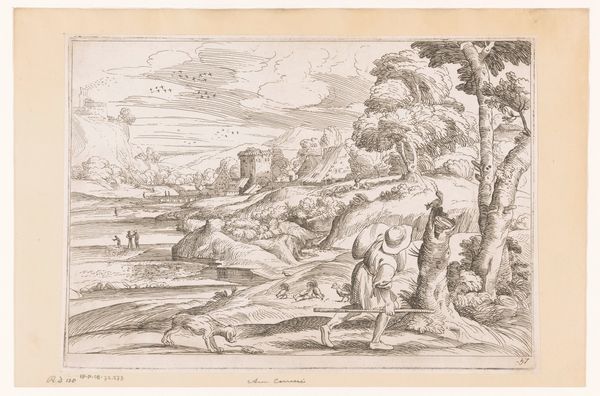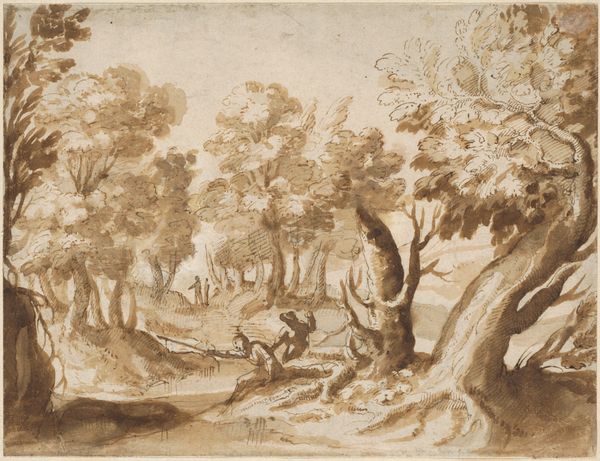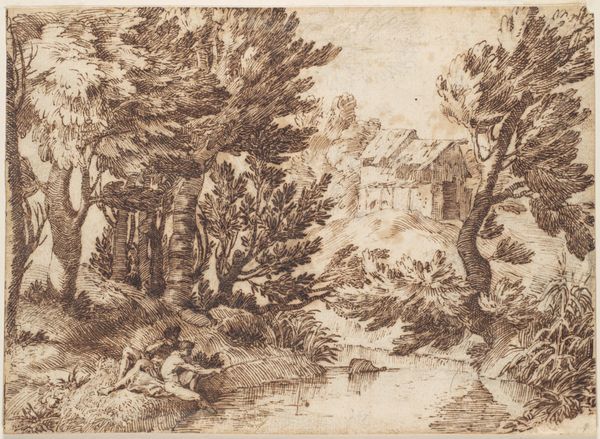
drawing, ink
#
drawing
#
baroque
#
pen sketch
#
pencil sketch
#
landscape
#
etching
#
form
#
ink
#
ink drawing experimentation
#
romanticism
#
line
#
watercolor
Dimensions: Overall: 21.7 x 24.7 cm (8 9/16 x 9 3/4 in.) overall (mount): 31.3 x 34.6 cm (12 5/16 x 13 5/8 in.)
Copyright: National Gallery of Art: CC0 1.0
Editor: We are looking at "Trees Reflected in a Brook," a pen and ink drawing. It’s attributed to Claude-Joseph Vernet. It gives me a peaceful feeling; I like how the reflection in the water is captured by the cross-hatching. What draws your eye when you see this piece? Curator: Immediately, I notice the labor involved. The artist's hand is evident in the density of the lines, built up meticulously to create depth and texture. How might Vernet's process reflect the broader societal relationship with the natural world at the time? Were these pastoral scenes idealized constructions, obscuring the labor inherent in shaping the landscape? Editor: That’s a good point. I was focusing on the nature, but it is a carefully constructed scene. What do you mean about obscuring labor? Curator: Well, landscape art often presents an idealized version of nature, omitting evidence of the work involved in resource extraction and land management. Consider the production of paper and ink for this drawing. What raw materials were needed, and what processes were used to transform them into art supplies? These details root the drawing in a network of industrial activities. The fashion for idyllic art demanded other forms of labor to become invisible. Editor: So, you’re suggesting that by focusing on the pretty trees, we overlook the human impact necessary to even create an image of them? Curator: Exactly! The apparent spontaneity of the sketch masks the labor-intensive processes of producing both the artwork itself and, potentially, the landscape it depicts. It invites questions about what is being included and excluded from our field of vision. Editor: That really shifts my understanding. It's not just a pretty landscape; it's also a product of a specific system of production. Curator: Precisely. And by understanding those systems, we gain a much deeper appreciation for the work's cultural context.
Comments
No comments
Be the first to comment and join the conversation on the ultimate creative platform.
